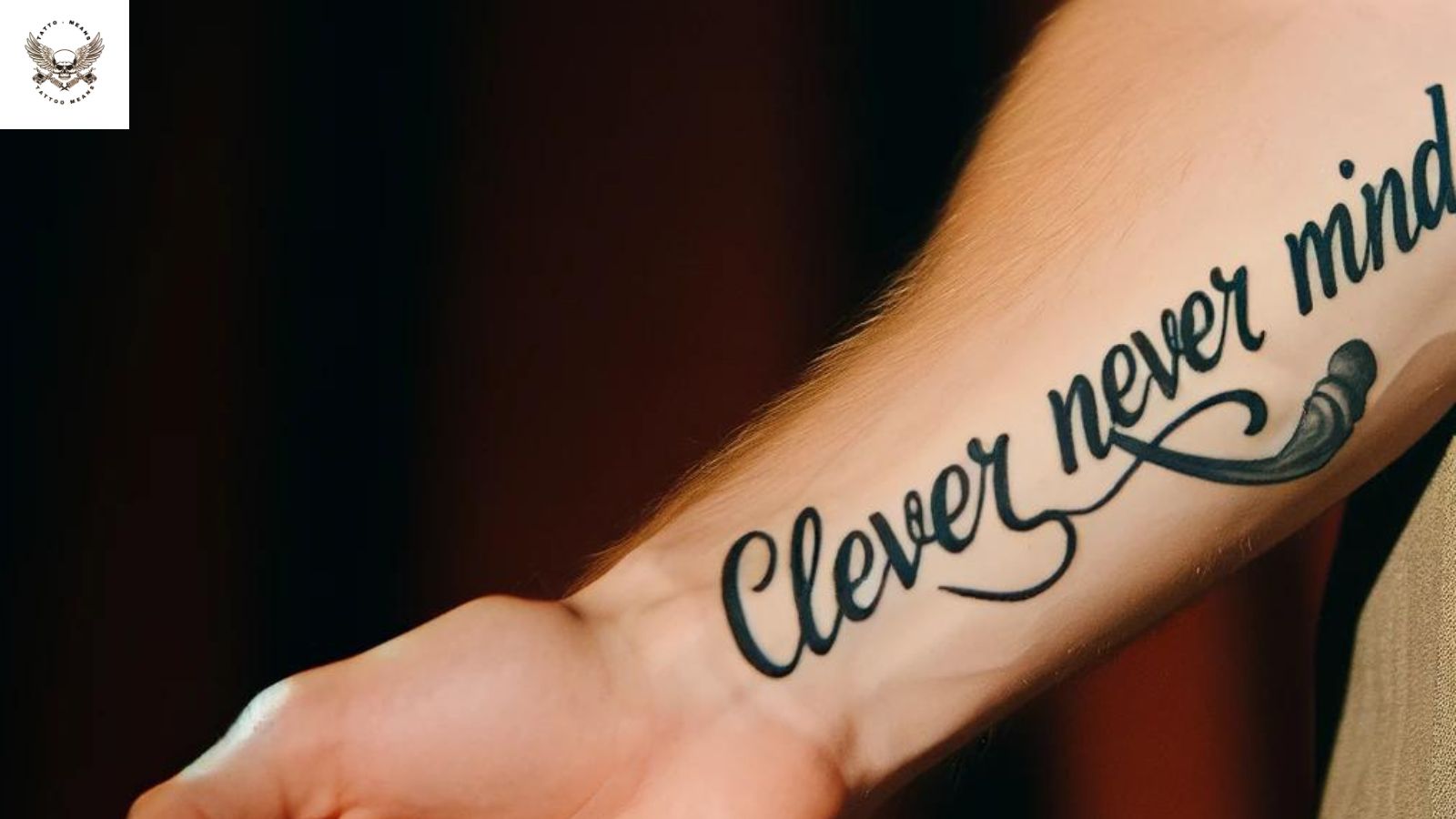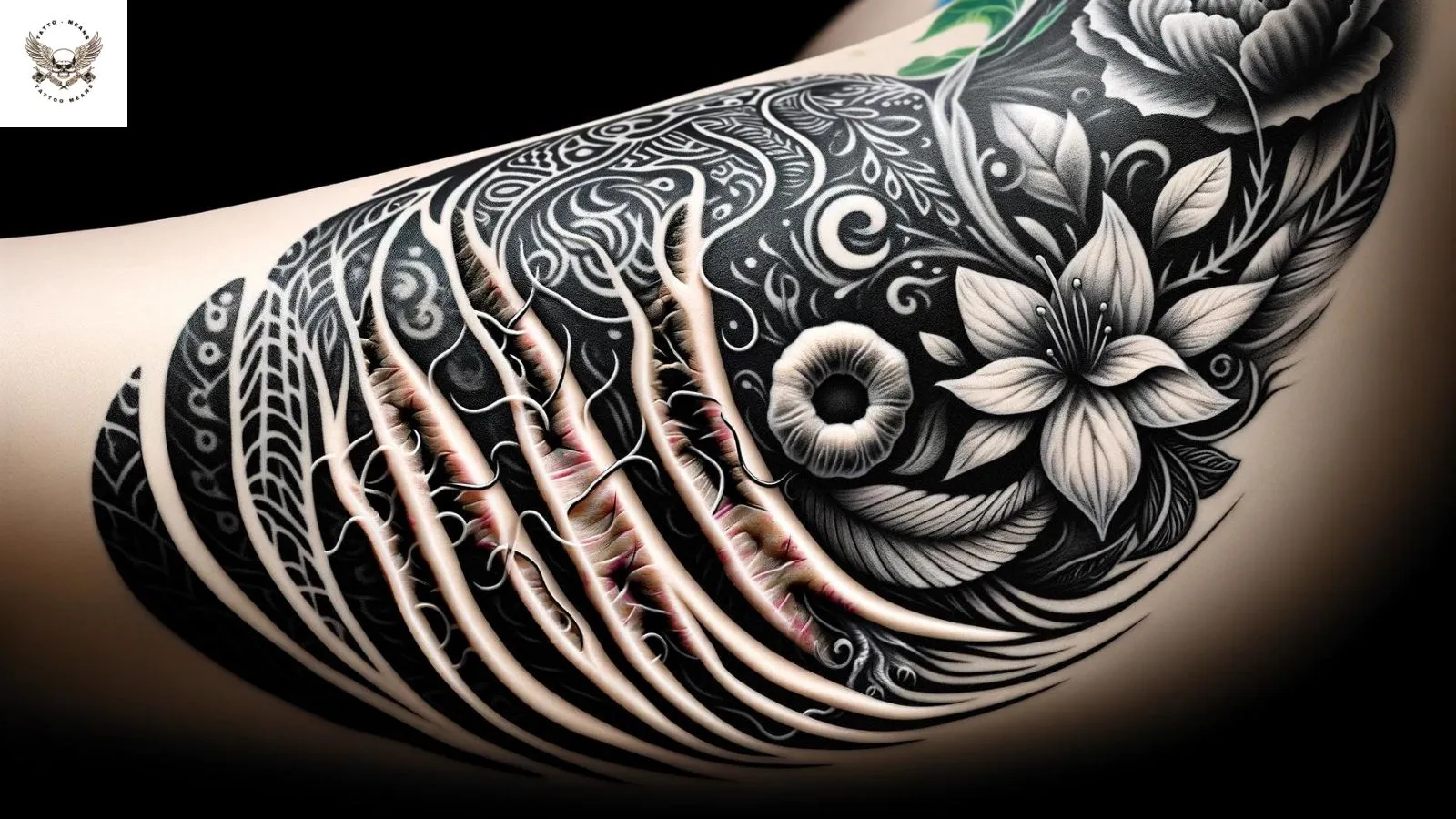Imagine looking down and seeing a special drawing on your skin that looks just right to you. This drawing is called an “upside-down tattoo.” It’s like having a secret message that only you understand because it’s turned the right way for your eyes only. It’s kind of like wearing a shirt with words on it that only you can read properly. Upside-down tattoos are different because they let you see the picture or words the way you like, making it your own secret.
With these tattoos, it’s the other way around! You get them because you want to see the picture or words the right way up for yourself, like having a secret message that only makes sense when you peek at it. Some people think all pictures should be the same for everyone to see, but others think it’s cool to have them your special way, just for you.

Tattoo just for me
Whether an upside-down tattoo is a good idea depends on several factors, including personal taste, the design’s significance, and placement on the body. Here are some considerations to help you decide if an upside-down tattoo is right for you:
For the Wearer’s View: If the tattoo is primarily for you and its orientation makes it easier to view and appreciate (e.g., on your forearm or leg), an upside-down tattoo might be a great choice.
Design Adaptability: Certain designs, such as symmetrical patterns or circular motifs, work well regardless of orientation. However, some images might lose their visual impact or become confusing when viewed upside down by others.
Placement: Consider how the tattoo will appear in everyday interactions. For instance, tattoos on the lower arm might naturally appear upside down to others when your arms are at your sides, which can be a deliberate choice based on the tattoo’s intended audience.

Best placement for Upside-down tattoo
Here are some popular places for these types of tattoos that are just for you, no-one else.
- Wrist
- Forearm
- Inner Arm
- Ankle and Foot
Historical and Cultural Context of Upside-Down Tattoo
The concept of tattoo orientation, including upside-down tattoos, carries varied significance across different cultures and historical periods. While the specific trend of upside-down tattoos for personal enjoyment and symbolism might seem modern, the practice of tattooing itself is ancient, with each culture having its unique perspectives on tattoo placement and orientation.
-
- Ancient Practices: In ancient cultures, tattoos often served as rites of passage, symbols of status, or protective amulets. For example, Egyptian women in antiquity might have tattoos placed in such a way that they were oriented correctly from their own perspective, serving both decorative and protective purposes.
-
- Indigenous Cultures: Many indigenous cultures around the world have used tattoos to express identity, social status, and achievements. The orientation of these tattoos could signify different meanings, such as a rite of passage or a spiritual protection symbol. In these contexts, the direction of the tattoo could enhance its power or significance to the wearer and their community.
-
- Modern Interpretation: Today’s trend of upside-down tattoos reflects a blend of these historical practices with contemporary values of individualism and personal expression. It’s a way for individuals to connect with their bodies and stories in a manner that’s meaningful to them, irrespective of traditional norms.
-
- Cultural Associations: While there isn’t a singular community known for pioneering upside-down tattoos, the trend can be seen as part of the broader movement towards personalized and meaningful tattoo art in various subcultures. It speaks to the evolving nature of tattooing from strictly cultural symbols to forms of individual expression and art.
You can Read also When Will a Finger Tattoo Start to Blur and Fade?






